- Home
- James Rollins
Sigma Force 10 - The Sixth Extinction Page 23
Sigma Force 10 - The Sixth Extinction Read online
Page 23
Gray pushed Kowalski toward the waiting cage. “Go!”
Jason followed them with Stella.
Gray cringed at the noise as he climbed inside. As the doors closed, the din of the emergency klaxon died to a muffled ringing, proving how solidly insulated the gondola was.
“What’re you doing, Professor?” Gray asked. “What’s your plan?”
“To get somewhere safe.”
Harrington pulled a lever and the cage began moving. But the gondola didn’t head back through the superstructure toward the battle being waged in the hangar. Instead, it rode forward, out into that vast cavern.
Ducking a bit and craning his neck, Gray saw the black steel tracks continuing along the cavern roof, supported by trestles in places to create a relatively even run.
“Where are we going?” he asked as he straightened.
“To the Back Door.” Harrington waved ahead with one arm; his other hand remained on the long red lever. “It’s a substation about four miles out. It leads back to the surface, just beyond the Fenriskjeften crags.”
Gray pictured that line of jagged peaks near the coast.
“There’s a radio there,” Stella added. “And a garaged CAAT.”
“So we’re just going to run?” Kowalski asked.
“No.” The professor pointed to the red button he had struck. “I just sounded a general evacuation alarm. The British forces will hold off Dylan Wright’s commandos for as long as possible, but after thirty minutes, they know to run. To get clear of this area.”
“Why?” Gray asked.
“The entire backside of this station is packed full of bunker buster bombs, including an American-made thirty-thousand-pound Massive Ordnance Penetrator. It will destroy the base and seal up the mouth of the cavern system, bottling up what’s down here.”
“When’s it set to blow?”
Harrington looked worried.
Stella answered, “It can only be deployed from the Back Door. Only my father has the blast code.”
Gray frowned. So the British forces will flee out the front while we sneak out the back door, blowing everything behind us. What the hell required such a level of security?
Before he could ask, Gray felt a mother of all headaches flaring behind his eyes—but it wasn’t only him.
Kowalski clutched the sides of his head, groaning. “Motherfu—”
Jason leaned on his knees, looking ready to vomit.
Harrington spoke through a tight jaw. “We’ll be through the worst of it in another few seconds.”
Gray breathed deeply, close to losing his breakfast, too. Then slowly the pain subsided; his back molars stopped vibrating in his skull. He could now guess the source of the sudden agony.
“LRAD?” he asked.
Long Range Acoustic Device.
Harrington nodded. “We have a series of sonic cannons pointed continually into the cavern at the edge of the station. As a buffer to keep everything as far back as possible. We’ve found a mix of ultrasonic and infrasonic frequencies to be an effective deterrent down here. Better than guns.”
Gray leaned a hand against the wall, steadying himself, glad the gondola was so well insulated. He could only imagine the raw intensity of that sonic deterrent outside.
Jason pointed between his feet to a glass hatch in the floor. Through the window, a chair could be seen below, bolted inside an enclosed undercarriage canopy. A weapon with a large conical dish was racked in front of the seat.
“That’s another LRAD cannon, isn’t it?” Jason asked.
Stella nodded. “You can also swap it out for a machine gun, if need be.”
“Once we’re beyond the buffer zone,” Harrington warned, “we may need both to protect the lift if we run into any serious trouble.”
Trouble from what?
Out the windows ahead of them, the world was pitch-black. Behind the gondola, the station’s lamp-lit bulkheads continued to recede into the darkness, reflected in the boiling lake. Then the tracks followed a bend in the cavernous tunnel and even that last light vanished.
Harrington stepped to a cabinet and opened a door. From hooks inside hung a row of heavy goggles—night-vision gear. “Put these on. I’m going to extinguish our cabin lights before we attract any attention. Then I’ll ignite our exterior infrared lamps.”
Gray tugged the gear over his eyes as Harrington doused the lights inside the gondola. His goggles picked up the small specks of light from diodes on the conveyor’s control panel, but beyond the windows, the world remained dark. In this sunless and moonless underworld, even night-vision was useless.
Then the professor kicked on the exterior lamps, and beams of infrared penetrated that endless darkness. Though the wavelength was invisible to the naked eye, the goggles turned those beams into the brightest spotlights—illuminating what the darkness had hidden a moment ago.
Gray gaped as the view opened ahead of him.
Kowalski simply shook his head. “Something tells me we’re gonna need bigger guns.”
12:14 P.M.
Jason pressed his palms against the glass, taking in the sights as the armored gondola slowly rode its rails across the roof of this new world.
“Have you ever seen anything like this?” Stella asked.
“No . . . not like this.”
The cavernous tunnel was tall enough to hold the Statue of Liberty without her torch ever scraping the rows of stalactites that hung from the roof like jagged fangs. Below, a snaking river slowly churned, fogged in steam. All around the gondola, a forest of massive columns formed a maze.
As their cage passed one, Jason noted stone branches jutting up from the pillar and joining the roof like support buttresses. Up close, the pillar’s rough surface appeared strangely corrugated, almost like bark.
Then he looked even closer.
“It is bark,” he suddenly realized aloud, glancing back as the column receded behind him.
“We’re moving through a petrified forest,” Stella said. “Remnants of a lost time when Antarctica was green and flush with life.”
“They’re Glossopteris, semitropical trees,” Harrington said. “Over the past decades, archaeologists have uncovered three such ancient forests on the surface of the continent. Massive petrified stumps with scatters of fossilized leaves around them.”
“But nothing as well preserved as down here,” Stella added with a small note of pride.
Jason remembered a detail about Darwin’s tale of the ancient Fuegian map: how on that chart, this place was marked by a grove of stylized trees. It was that promise of green life in this icy land that drew the Beagle to its ill-fated journey here.
Could this be that forest? Were these petrified trees what the Fuegians had actually drawn on their map?
Fascinated, Jason continued his bird’s-eye survey of the terrain. As he watched the river below, something large humped out of the water and vanished. At first he thought it was a trick of the eye; then another appeared, and another.
“Something’s in the water,” he said.
Gray joined him. “Where?”
Before Jason could point, a large pale crustacean-like spider climbed out of the shallows and up onto a bank. It was the size of small calf, with a pair of large pincers in front and spikes along its carapace. Then those spikes scurried off the creature’s back and appeared to be scouring the black algae from the damp rocks.
A dark shadow swooped down from a hidden nest among the stalactites and landed atop the tips of its clawed leathery wings. A sharp beak speared down and plucked up one of those small feeders, then stabbed down for another.
The larger crustacean defended its young and scrabbled after the attacker, its claws snapping. Avoiding a fight, those wings snapped out again, and with a single beat, the aerial predator burst upward. It flew in a wide arc, passing close to the gondola. It had a six-foot wingspan, its body covered in fine black scales; its head looked crocodilian, except for the sword-like beak.
“That’s a smal
ler example of the species,” Harrington commented. “We named them Hastax valans, Latin for flying spear. We’ve encountered individuals three times that size. That pale lobster is Scalpox cancer or chiseled claw.”
“What else is out there?” Commander Pierce asked.
“So much more, an entire complex ecosystem. We’re still trying to classify much of it. So far, we’ve identified over a thousand new species, from the lowly Lutox vermem—”
“A type of mudworm,” Stella interjected.
“—to the elephant-sized Pachycerex ferocis.”
Jason could not keep the mix of wonder and horror from his voice. “Amazing.”
Gray knew Harrington’s partner—Dr. Hess—had been scouring the globe for examples of shadow biospheres, looking for radical new forms of life.
Looks like he found it in spades here.
“This is the first environment of its kind,” Harrington declared. “A unique xenobiological ecosystem.”
Jason frowned. “Xenobiological?”
Stella explained, revealing her master’s degree in evolutionary biology. “It’s an ecosystem based on a biological system foreign to the rest of life on this planet. It’s why we established a taxonomic classification system that incorporates an X into all the Latin names, to distinguish the various new species as xenobiological.”
Jason could not take his gaze from the sights below.
Outside the gondola, the flying predator had circled and looked ready to dive again upon that pale Scalpox and its young. It swept low over the water, stirring the mists. From the river—as if drawn upward by its wake—luminous globes the size of bowling balls shot upward. Jason shifted off his night-vision goggles for a moment. The globes scintillated in electric shades in the darkness, reminding him of the bioluminescent creatures found in deep-sea trenches. Only these glowing lures rose from larger bodies hiding underwater: huge eel-like creatures undulating through the river.
The aerial predator flew through a patch of those globular balloons, tangling and snagging them with its wings. Where they touched, flesh sizzled and burned. The Hastax writhed in agony and tumbled into the water. Through the dark surface, Jason watched those monstrous eels close in on their prey.
The attack reminded him of the hunting technique of an anglerfish, which used a similar bioluminescent lure to hunt for food.
Stella named this new predator, her voice frosted by dread. “Volitox ignis.”
Jason had taken enough Latin to guess the translation. “Floating fire.”
“They’re one of the nastier inhabitants down here. With their python-like bodies, they’re very fast underwater, capable of casting out those burning tethers to nab prey out of the air or off the riverbank. They’re also incredibly prolific, giving birth to great volumes of carnivorous young. To make matters worse, their offspring are born with vestigial limbs for climbing onto land. There’s no escaping them.”
“The Volitox are also very intelligent,” Harrington added, looking equally grim. “They hunt in packs, employing a multitude of ambushing techniques. Even our sonic weapons are useless against them.”
Stella scowled. “We lost three men in our early expeditions . . . before we knew better.”
“It’s a harsh, alien world down here,” Harrington conceded. “The survival strategies that have evolved are clever and terrifying.”
Jason stared down at the waters, gone black again, hiding what lurked below.
Sounds like we could use some clever survival strategies of our own.
12:16 P.M.
“They’re gone, sir,” his second-in-command stated.
“I can see that.”
Major Dylan Wright stared at the empty tracks leading out from the observation deck. Fury heated his face, burning as hotly as the bullet graze across his upper thigh. He had lost two men during the raid, all in a rushed attempt to reach Harrington before he could escape.
Bertram and Chessie, he reminded himself, intending to honor the pair when the time was right. But he still had another fifteen men under his command, looking to him for the next move.
“The bombs,” Dylan asked. “What’s the word from Gleeson?”
His second-in-command, a muscular Scotsman named McKinnon, shook his head. “Looks like the base installed a new system after we left. Gleeson might be able to work out a way to defuse them, but not likely in the next half hour.”
It won’t take Harrington that long to reach the Back Door.
Dylan cursed the fact that his team’s activities were exposed sixteen months ago, requiring a fast escape from Hell’s Cape to avoid capture. It had made the rest of his mission troublesome and problematic. Luckily he had the foresight to rig the ice shelf supporting the Halley station with incendiary bunker busters of his own. Hopefully it had taken out the American team. He pictured the man firing at the Twin Otter, smoking out the plane’s starboard engine. His team had barely made it back to their base. Still, they had maintained their schedule.
Until now . . .
“I could send a team overland,” McKinnon offered. “We could ambush them out there.”
“If the base upgraded the security here, they would’ve done the same out there.”
Besides, the Back Door substation was on the far side of the forbidding coastal crags. No team could get there in time to stop Harrington from blowing this place to kingdom come.
And that must not happen.
At least not before I’ve completed my mission.
Failure was not a word in his employer’s vocabulary. Cutter Elwes had paid dearly for his team’s services, including placing hefty bribes and pulling the right strings to get his group assigned to the station as a security detail. Since then they had been feeding Elwes intelligence about this place for years, obeying his every instruction.
And now the endgame was in play.
If successful, the windfall for his team would set them up for life.
McKinnon shifted his feet. “What’s the next step?”
He ran various scenarios through his head, staring out into the dark cavern. Harrington had hightailed it out of here, like a fox before his father’s hounds. But Dylan had never failed in a hunt—not on his family’s country estate, and certainly not now.
His palm came to rest on the holstered nineteenth-century Howdah pistol, one of the rare treasures still in his possession, despite the family falling on hard times these past decades. The gun was a double-barrel weapon, over eighteen inches long, loaded with custom-made .577 cartridges and fired with rebounding twin hammers. The pistol dated back to the time of the British raj, when his family once lived as kings in India. Its name—howdah—came from the saddle worn by elephants, and the large-bore weapon had been used back then to defend against tiger attacks or to hunt large game.
He had even tested the gun here, against the denizens of Hell’s Cape.
His fingers tightened on the grip, preparing for yet another hunt through these dark caverns.
“Gear the men up,” he said. “Load the packages into the CAATs. We’re going after them. Top speed.”
“The professor has a good lead on us,” McKinnon warned.
Dylan sneered, appreciating the challenge.
“Then we’ll have to do something about that.”
12:17 P.M.
A heavy silence had settled across the gondola, each passenger lost in his or her thoughts. All the while, Gray watched the mileage indicator click down. They were only a quarter of the way to this secondary station, the Back Door.
He studied the world beyond their meager refuge. With a long way still to go, he wanted as much information as possible before they reached the end of the line.
“So where did this all come from?” he finally asked, breaking the tense silence. “How could this ecosystem have survived down here for so long without any sunlight?”
“I don’t have an answer to your first question,” Harrington said, “but I have my theories. As to how this ecosystem could have survived,
the situation here is not all that different from those oases of life found growing and thriving alongside deep-sea hydrothermal vents. No one expected to find life at those depths, in that eternal darkness, at such extreme temperatures. But nature found a way. The same down here, but on a grander scale.”
Harrington waved a hand to indicate the steaming water. “The ecosystem down here is not driven by the sun, or photosynthesis, but by chemicals—by chemosynthesis. It all starts with chemoautotrophic bacteria that feed on hydrogen sulfide or methane, chemicals continually spewing into this cavern system from all of the local geothermal activity. Those bacteria grow into thick mats—serving a similar role as the grasses of the sunlit world above—fueling the web of life found down here.”
Stella cautioned, “But even chemosynthesis cannot fully explain how all this formed. Like my father mentioned, life down here is xenobiological, foreign to anything seen on the surface.”
“How is it specifically foreign?” Jason asked.
“The life found in this ecosystem is not based on DNA, but on a variant using a different genetic backbone, namely XNA.”
Gray had heard the reports out of California, about how the synthetic organism released by Dr. Hess was an organism engineered with XNA, replacing the normal sugar molecule in DNA with some toxic combination of arsenic and iron phosphate. Here must be the source of that unique genetic element.
“Why does XNA make such a difference?” he asked.
“It makes all the difference,” Harrington expounded. “Richard Dawkins described our DNA as selfish, that our genes are driven by evolutionary pressures to multiply themselves above all else. If I had to describe XNA, I would depict it as predatory.”
“Predatory?”
“From our studies of this natural landscape—and verified in labs that have synthetically created versions of XNA—these genes are opportunistic and highly mutagenic, far more than regular DNA, allowing for accelerated evolution. XNA genes are not merely selfish but focused toward total domination. Even the phenotypic expression of those genes reflects that core drive, creating organisms that are extremely hardy, resilient, and highly adaptable. Expose them to any environmental niche, and they will evolve a way to take it over.”

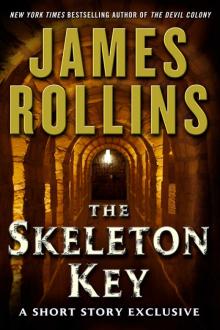 The Skeleton Key
The Skeleton Key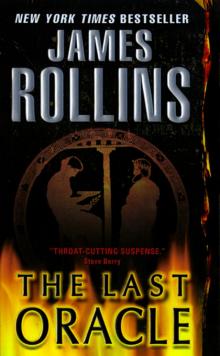 The Last Oracle
The Last Oracle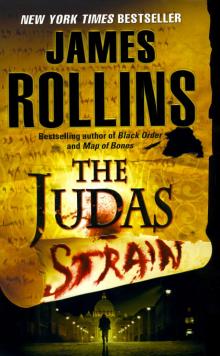 The Judas Strain
The Judas Strain Black Order
Black Order Sandstorm
Sandstorm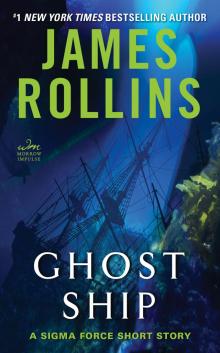 Ghost Ship
Ghost Ship The Devil Colony
The Devil Colony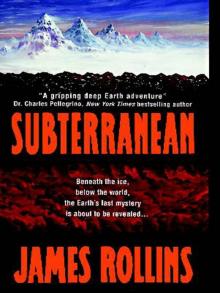 Subterranean
Subterranean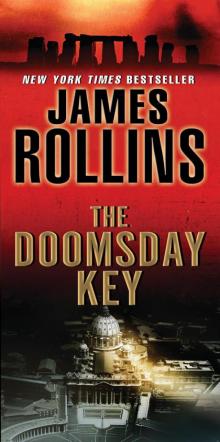 The Doomsday Key
The Doomsday Key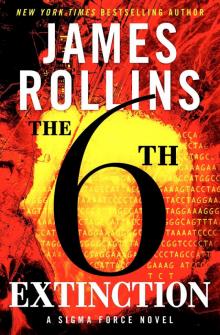 The 6th Extinction
The 6th Extinction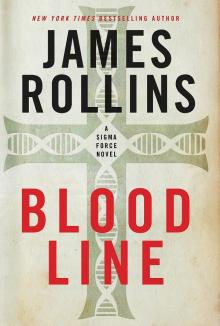 Bloodline
Bloodline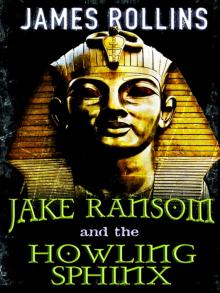 Jake Ransom and the Howling Sphinx
Jake Ransom and the Howling Sphinx The Midnight Watch
The Midnight Watch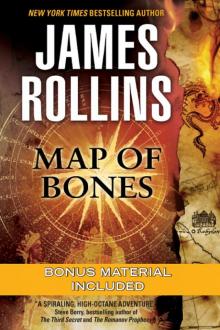 Map of Bones
Map of Bones The Demon Crown
The Demon Crown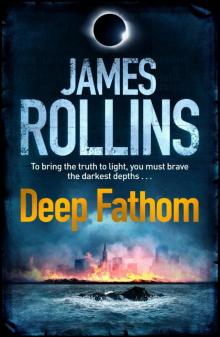 Deep Fathom
Deep Fathom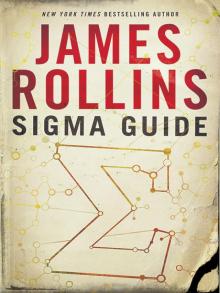 Sigma Guide
Sigma Guide Kowalski's in Love
Kowalski's in Love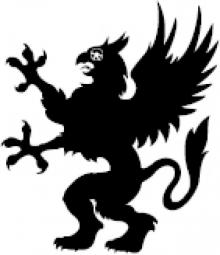 Jake Ransom and the Skull King's Shadow
Jake Ransom and the Skull King's Shadow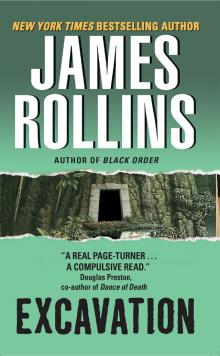 Excavation
Excavation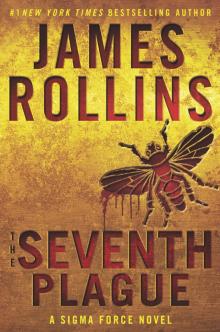 The Seventh Plague
The Seventh Plague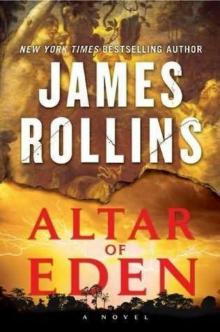 Altar of Eden
Altar of Eden Unrestricted Access: New and Classic Short Fiction
Unrestricted Access: New and Classic Short Fiction Indiana Jones and the Kingdom of the Crystal Skull
Indiana Jones and the Kingdom of the Crystal Skull Crucible
Crucible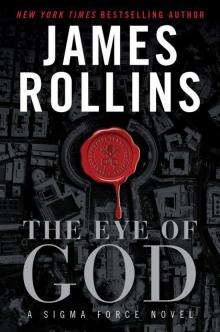 The Eye of God
The Eye of God The Bone Labyrinth
The Bone Labyrinth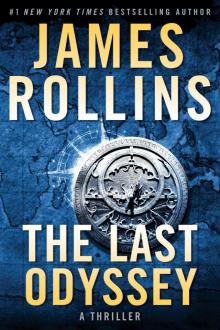 The Last Odyssey: A Thriller
The Last Odyssey: A Thriller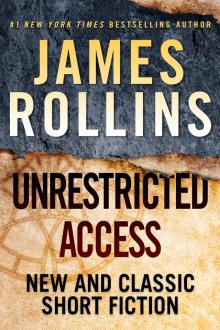 Unrestricted Access
Unrestricted Access Amazonia
Amazonia Blood Brothers: A Short Story Exclusive
Blood Brothers: A Short Story Exclusive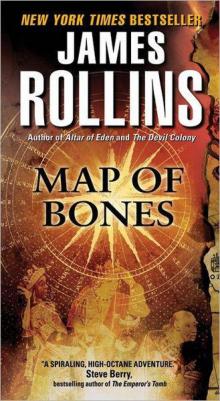 Map of Bones: A Sigma Force Novel
Map of Bones: A Sigma Force Novel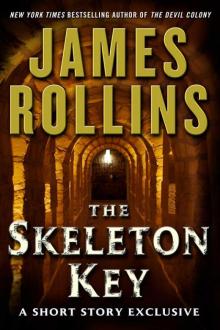 The Skeleton Key (sigma force)
The Skeleton Key (sigma force)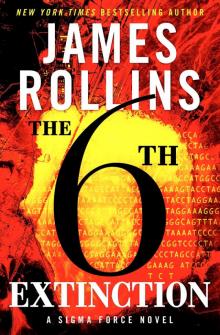 Sigma Force 10 - The Sixth Extinction
Sigma Force 10 - The Sixth Extinction Innocent Blood
Innocent Blood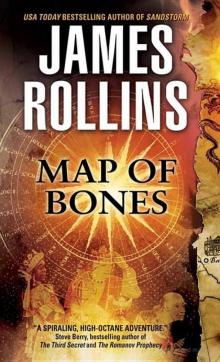 Map of Bones sf-2
Map of Bones sf-2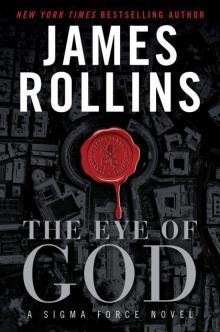 The Eye of God: A Sigma Force Novel
The Eye of God: A Sigma Force Novel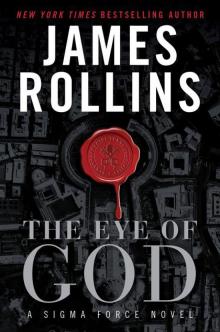 The Eye of God: A Sigma Force Novel sf-9
The Eye of God: A Sigma Force Novel sf-9 The Pit
The Pit Indiana Jones and the The Kingdom Of The Crystal Skull
Indiana Jones and the The Kingdom Of The Crystal Skull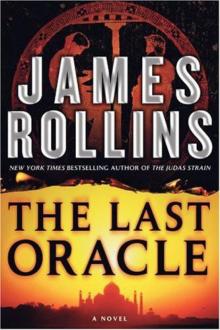 The Last Oracle (2008) sf-5
The Last Oracle (2008) sf-5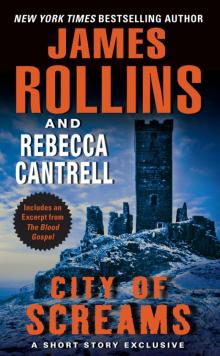 City of Screams
City of Screams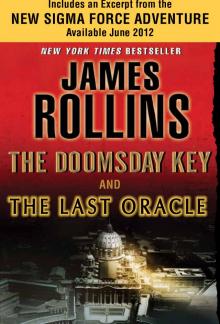 The Doomsday Key and The Last Oracle with Bonus Excerpts
The Doomsday Key and The Last Oracle with Bonus Excerpts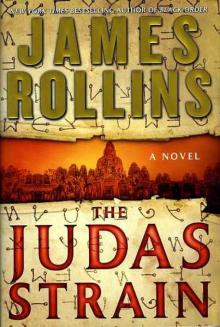 The Judas Strain sf-4
The Judas Strain sf-4 Blood Infernal
Blood Infernal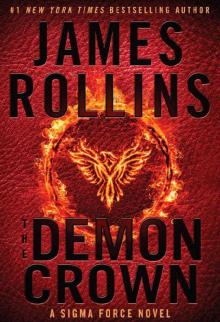 The Demon Crown: A Sigma Force Novel
The Demon Crown: A Sigma Force Novel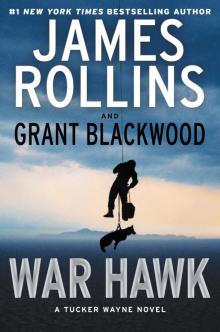 War Hawk: A Tucker Wayne Novel
War Hawk: A Tucker Wayne Novel SANDSTORM sf-1
SANDSTORM sf-1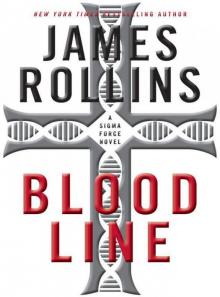 Bloodline: A Sigma Force Novel
Bloodline: A Sigma Force Novel Amazonia: a novel
Amazonia: a novel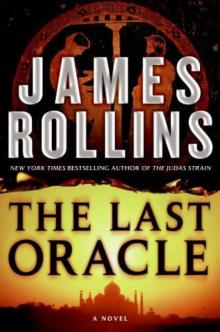 The Last Oracle: A Sigma Force Novel
The Last Oracle: A Sigma Force Novel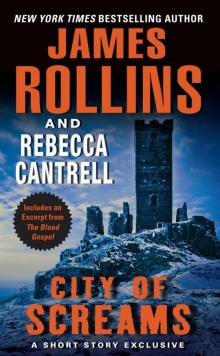 City of Screams (the order of the sanguines)
City of Screams (the order of the sanguines)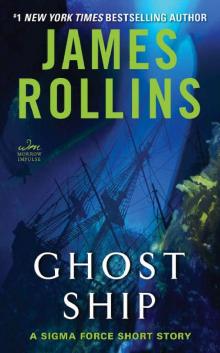 Ghost Ship: A Sigma Force Short Story
Ghost Ship: A Sigma Force Short Story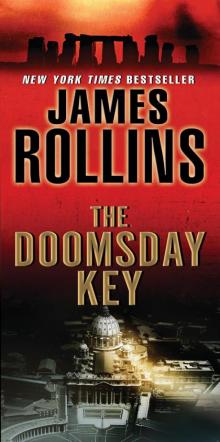 The Doomsday Key: A Sigma Force Novel
The Doomsday Key: A Sigma Force Novel